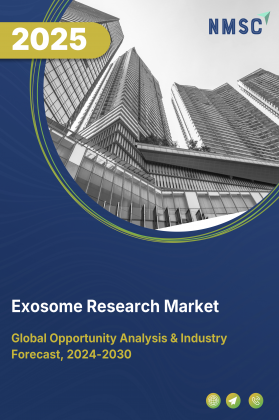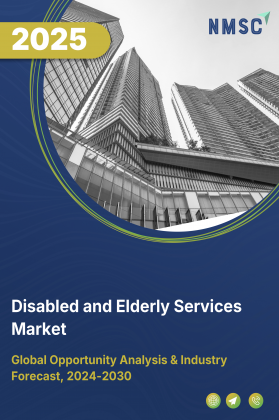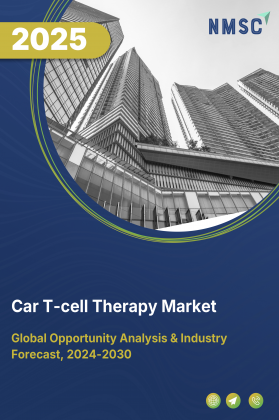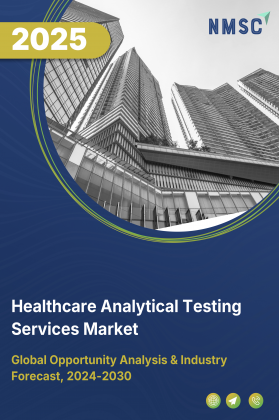
Exosome Research Market by Product (Kits & Consumables, Instruments, Software), by Source Type (Biofluid-derived Exosomes [Blood, Serum, Plasma, Urine, Saliva, Others], Tissue-derived Exosomes, Engineered Exosomes), and by End User (Academic & Government Research Institutes, Biotech & Pharmaceutical Companies, Diagnostic & Clinical Labs, Contract Research Organizations, Regional Vendors & Service Providers) – Global Opportunity Analysis and Industry Forecast, 2025–2030
Industry Outlook
The global Exosome Research Market size was valued at USD 222.4 million in 2024, with an estimation of USD 262.9 million in 2025 and is predicted to reach USD 606.6 million by 2030 with a CAGR of 18.2% from 2025-2030.
The industry is witnessing rapid growth, driven by the rising prevalence of chronic and life-threatening diseases, increasing healthcare spending, and growing collaborations between academia and industry. Exosomes are emerging as vital tools in diagnostics, therapeutics, and drug delivery, offering significant potential for early disease detection and improved treatment outcomes.
While high research costs and complex isolation processes pose challenges, technological advancements in microfluidics, nanotechnology, and high-throughput analysis are creating new opportunities. These innovations are enhancing efficiency, reducing costs, and broadening applications in personalized medicine and regenerative therapies, positioning the exosome research market for sustained expansion in the coming years.
Rising Prevalence of Chronic and Life-Threatening Diseases Boost the Market Growth
The increasing incidence of diseases such as cancer, neurodegenerative disorders, and cardiovascular conditions is a major driver of the exosome research market growth. As these diseases become more widespread, there is a growing demand for advanced diagnostic tools and therapeutic solutions.
According to the World Health Organization (WHO), approximately 20 million new cancer cases were detected in 2022, with projections estimating an increase to 35 million by 2050 a growth of nearly 75% over 28 years. This surge underscores the urgent need for innovative medical interventions.
Exosomes, with their potential as biomarkers and therapeutic agents, are being increasingly explored to improve patient management, early disease detection, and treatment outcomes, thereby fuelling the industry expansion.
Increased Healthcare Spending and Funding for Research Fuels Market Expansion
Rapid growth in healthcare expenditure is another key factor propelling the exosome research market demand. Increased allocation of funds toward healthcare supports the development of novel therapeutic strategies and enables more extensive exploration of exosome applications, including drug delivery and diagnostic purposes.
For example, the U.S. Centers for Medicare & Medicaid Services estimated an 8.2% growth in national health spending in 2024, with a projected 7.1% increase in 2025. Such substantial investments from both public and private sectors are driving advancements in understanding exosomes’ role in various diseases, accelerating the adoption of exosome-based innovations, and ultimately contributing to the exosome research market growth.
Strategic Collaborations Between Academia and Industry Drives the Market Demand
Collaborations between academic institutions and biotechnology companies are significantly accelerating the translation of exosome research into clinical applications. These partnerships facilitate the sharing of expertise, technology, and resources, enabling more effective development of exosome-based diagnostics and therapeutics.
A notable example is the August 2024 collaboration between La Trobe University and VivaZome Therapeutics, aimed at developing exosome therapies for conditions such as traumatic brain injury and retinal diseases. Such joint efforts foster innovation, enhance the understanding of exosome functions, and drive the exosome research market expansion.
High Costs and Complex Processes Limit Market Growth
The growth of the sector is hindered by the high costs associated with research and development, as well as the complex processes required for exosome isolation and purification. These challenges increase operational expenses and limit large-scale adoption, particularly in clinical and diagnostic applications. The intricate nature of exosome handling demands specialized expertise and equipment, which further slow market expansion.
Technological Innovations Creates Future Opportunity for the Market
Technological advancements in exosome isolation and analysis are creating significant opportunities for the market. Innovations in microfluidics, nanotechnology, and high-throughput techniques are enhancing the precision and efficiency of exosome detection and characterization.
These developments help reduce costs, improve scalability, and make exosome-based applications more accessible. As a result, exosomes are increasingly utilized in personalized medicine, drug delivery, and disease monitoring, driving the market toward sustained growth in the future.
Market Segmentations and Scope of the Study
The exosome research market report is segmented by product, source type, end user and region. By product, it includes kits and consumables such as isolation kits, detection and quantitation kits, antibodies and markers, labeling reagents, and others. By source type, it covers biofluid-derived exosomes and tissue-derived exosomes, tumor biopsies; and engineered exosomes. By end user, it includes academic and government research institutes, biotech and pharmaceutical companies, diagnostic and clinical laboratories, contract research organizations, and regional vendors and service providers. Regional coverage includes North America, Europe, Asia-Pacific, and Rest of the World (RoW).
Geographical Analysis
North America currently dominates the exosome research market share and is expected to maintain its leading position throughout the forecast period. This dominance is driven by substantial healthcare expenditure, which supports extensive research and development in advanced diagnostics and therapeutic solutions.
Increasing funding for medical innovations accelerates the development of novel therapies and deepens the understanding of exosome biology. Furthermore, the rising prevalence of cardiovascular diseases fuels the demand for innovative treatment options and improved patient management strategies.
According to the CDC, heart disease is the leading cause of death among men, women, and various racial and ethnic groups in the U.S. The growing focus on exosome-mediated mechanisms in cardiovascular health is accelerating the development of targeted therapeutic solutions, thereby expanding the market in the region.
Asia-Pacific is emerging as the fastest-growing region in the industry. The growth is driven by a rapidly aging population, which leads to increased incidence of age-related diseases and neurodegenerative conditions. Additionally, government initiatives and rising healthcare investments are supporting market expansion.
For example, in India, public healthcare expenditure is projected to reach 1.9% of GDP in FY26, compared to 2.5% in FY25, according to the Economic Survey 2024-25 reported by IBEF. These factors, combined with growing awareness of exosome-based diagnostics and therapeutics, position Asia-Pacific as a key growth region.
In the EU, the population aged 80 and above is projected to rise from 6.1% in 2024 to 15.3% by 2100. This significant demographic shift is expected to fuel demand for exosome-based diagnostics and therapeutics targeting age-related diseases, including neurodegenerative disorders, cardiovascular conditions, and other chronic illnesses.
As the prevalence of these conditions grows, healthcare systems are increasingly seeking advanced, personalized treatment solutions. Exosome technologies, with their ability to enable precise disease monitoring, drug delivery, and regenerative therapies, are well-positioned to address these emerging healthcare needs, thereby driving the expansion of the market in Europe over the forecast period.
The Rest of the World (RoW), including regions such as Latin America, the Middle East, and Africa, is witnessing steady growth in the exosome market. Increasing awareness of advanced diagnostics, rising investments in healthcare infrastructure, and expanding research collaborations are driving market adoption in these regions.
Countries with emerging healthcare systems are gradually incorporating exosome-based technologies into clinical research and therapeutic applications. Although market penetration is currently lower compared to North America, Europe, and Asia-Pacific, growing initiatives in precision medicine and biotechnology research are expected to create significant opportunities in the coming years.
Strategic Innovations Adopted by Key Players
Key players in the exosome research industry are focusing on portfolio optimization, strategic partnerships, and advanced product launches to expand their capabilities and drive innovation in diagnostics and therapeutics.
-
In August 2025, Bio-Techne agreed to divest its Exosome Diagnostics line, including the ExoDx Prostate (EPI) test and associated CLIA lab, to MDxHealth SA. Bio-Techne will retain access to its proprietary exosome-based technology for continued kit development.
-
In April 2025, RoosterBio partnered with Thermo Fisher to accelerate development and manufacturing of MSC-derived exosome therapies, combining RoosterBio’s exosome expertise with Thermo Fisher’s GMP manufacturing capabilities.
-
In April 2025, QIAGEN N.V. introduced new QIAseq panels for genomic profiling and QIAcuity digital PCR kits, enhancements that support biomarker discovery workflows relevant to exosome studies.
Key Benefits
-
The report provides quantitative analysis and estimations of the industry from 2025 to 2030, which assists in identifying the prevailing exosome research market opportunities.
-
The study comprises a deep-dive analysis of the current and future exosome research market trends to depict prevalent investment pockets in the sector.
-
Information related to key drivers, restraints, and opportunities and their impact on the market is provided in the report.
-
Competitive analysis of the key players, along with their market share is provided in the report.
-
SWOT analysis and Porters Five Forces model is elaborated in the exosome research market study.
-
Value chain analysis in the market study provides a clear picture of roles of stakeholders.
Exosome Research Market Key Segments
By Product
-
Kits & Consumables
-
Isolation kits
-
Detection & quantitation kits
-
Antibodies & markers
-
Labeling reagents
-
Others
-
-
Instruments
-
Ultracentrifuges
-
Nano-particle analyzers
-
Flow cytometers
-
Microfluidic devices
-
Others
-
-
Software
-
Data analysis platforms for exosome profiling
-
Visualization & interpretation tools
-
Others
-
By Source Type
-
Biofluid-derived Exosomes
-
Blood
-
Serum
-
Plasma
-
Urine
-
Saliva
-
Others
-
-
Tissue-derived Exosomes
-
Solid organ tissue
-
Tumor biopsies
-
-
Engineered
By End User
-
Academic & Government Research Institutes
-
Biotech & Pharmaceutical Companies
-
Diagnostic & Clinical Labs
-
Contract Research Organizations
-
Regional Vendors & Service Providers
By Region
-
North America
-
The U.S.
-
Canada
-
Mexico
-
-
Europe
-
The UK
-
Germany
-
France
-
Italy
-
Spain
-
Denmark
-
Netherlands
-
Finland
-
Sweden
-
Norway
-
Russia
-
Rest of Europe
-
-
Asia-Pacific
-
China
-
Japan
-
India
-
South Korea
-
Australia
-
Indonesia
-
Singapore
-
Taiwan
-
Thailand
-
Rest of Asia-Pacific
-
-
RoW
-
Latin America
-
Middle East
-
Africa
-
Key Players
-
NanoSomiX, Inc.
-
Malvern Panalytical
-
System Biosciences, LLC.
-
Capricor Therapeutics, Inc.
-
Miltenyi Biotec
-
RoosterBio, Inc
-
NX Pharmagen
-
Lonza Group AG
-
AMS Biotechnology (Europe) Limited (AMSBIO)
-
Exosome Diagnostics, Inc.
-
EXO Biologics
-
Evox Therapeutics Ltd.
-
QIAGEN N.V.
Report Scope and Segmentation
|
Parameters |
Details |
|
Market Size in 2025 |
USD 262.9 Million |
|
Revenue Forecast in 2030 |
USD 606.6 Million |
|
Growth Rate |
CAGR of 18.2% from 2025 to 2030 |
|
Analysis Period |
2024–2030 |
|
Base Year Considered |
2024 |
|
Forecast Period |
2025–2030 |
|
Market Size Estimation |
Million (USD) |
|
Growth Factors |
|
|
Countries Covered |
28 |
|
Companies Profiled |
15 |
|
Market Share |
Available for 10 companies |
|
Customization Scope |
Free customization (equivalent up to 80 working hours of analysts) after purchase. Addition or alteration to country, regional, and segment scope. |
|
Pricing and Purchase Options |
Avail customized purchase options to meet your exact research needs. |

















 Speak to Our Analyst
Speak to Our Analyst

























